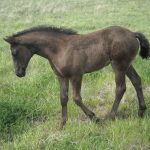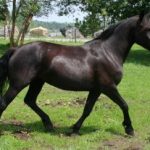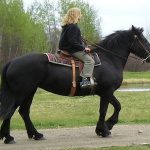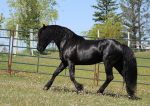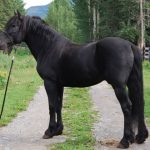Canadian Horse
The Canadian horse is a breed of versatile horses that are highly valued in their native land. Over the years, the Canadian has evolved under harsh environment and lived off sparse food. Hence, it is now considered one of the strongest and most acclimatized equine breeds in Canada.
Canadian Horse Pictures
- Canadian Horse Foal
- Canadian Horse Images
- Canadian Horse Photos
- Canadian Horse Pictures
- Canadian Horse Show
- Canadian Horse Stallion
- Canadian Horse
- Canadian Horses
- Canadian Race Horse
- Canadian Sport Horse
- French Canadian Horse
- The Canadian Horse
Quick Information
| Other Names | Cheval Canadian, French Canadian Horse |
| Temperament / Personality | Sensible, sociable, trainable, intelligent, calm |
| Physical Characteristics | Short, high-set head, broad forehead, arched and graceful neck, large, strongly-muscled back and loin, sloping shoulders, and croup, high-set tail |
| Colors | Black, brown, and bay are common; chestnuts and gray are rare; manes and tails are sometimes flaxen |
| Height (size) | 14-16 hands (56-64 inches, 142-163 cm) |
| Weight | Mare: 1,000-1,250 lbs (450-570 kg) Stallion: 1,050-1,350 lbs (480-610 kg) |
| Blood Type | Warm-blooded |
| Common Uses | Leisure riding, trail riding, driving, jumping, light draft work; used as a stock horse; in the past, used as cavalry and artillery horses |
| Health | Equine infectious anemia, arthritis, and other degenerative joint diseases may occur |
| Gaited | Yes; a flashy trot |
| Popular Traits | Good work ethic, excellent disposition, hardiness, strength, agility |
| Feeding/Diet | Good quality hay, pasture, rice bran, beet pulp; plenty of water |
| Country of Origin | Canada |
| Ancestors | Bretons, Arabians, Normans, Barbs, Andalusians |
| Breed Registry/Association | Canadian Horse Heritage and Preservation Society, Canadian Horse Breeders Association |
Video: Riding a Canadian Horse
History and Development
The Canadian horse traces its ancestry back to the late 1600s, a period when a shipment of horses were sent to Canada by King Louis XIV. The first shipment, which arrived in 1665, included twenty mares and two stallions. Two more shipments were sent – one in 1667 and the other in 1670, comprising a mix of pacing, trotting, and draft horses. Despite poor living conditions, the animals thrived and were referred to as “The Horse of Steel” and “The Little Iron Horse.”
During the 18th century, the “French-Canadian Horse” population increased quickly and a fair number of these equines spread through Illinois and eastern Michigan in the US where they mainly lived a feral life. In the mid-19th century, about 150,000 horses existed, and many of which were exported annually. Some horses, sent to the West Indies, played a role in the development of gaited breeds like the Paso Fino. Throughout the northeastern US, the Canadian horses contributed to other breeds, including the Standardbred, American Saddlebred, and Morgan horse.
Since these horses were used for working on the sugar plantations, pulling stagecoaches, and as artillery horses during the Civil War and the Boer War, the number of horses exported to other countries increased considerably. As the Canadian horse population dwindled, the introduction of motorized farm machinery further pushed these horses to the point of extinction. By the 1870s, only 400 horses remained, and thus diligent breeders made several efforts to revive their population.
In 1886, the first stud book was produced under the guidance of Dr. Joseph Alphonse Couture. The Canadian Horse Breeders Association was set up in 1895 while a new breed registry was started in 1907 under the supervision of the Federal Government. Several breeding programs were established in Quebec at Cap Rouge, La Gorgendiere, and St. Joachim that continued production of Canadian Horses until 1981. After years of preservation, the population of Canadian horses counted 2,500-3,000 by the mid-1990s.
Interesting Facts
- A DNA study published in 2012 had shown that the Canadian horse is genetically similar to draft breeds like the Belgian, Clydesdale, and Percheron.
- It has been declared as Canada’s national breed in 1909 and an animal symbol in 2002 by Parliamentary Act.
- When the popularity of these horses was at a peak, three types of Canadian horses were seen. The first was the Canadian Heavy Draft, which disappeared during the late 1700s, the second was the Frencher, which was known for its strength and speed, and the third was the Canadian Pacer, which could race on ice.


